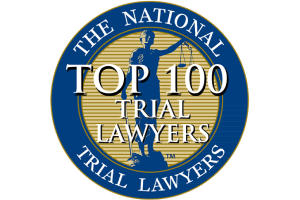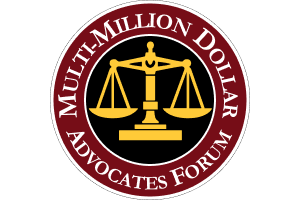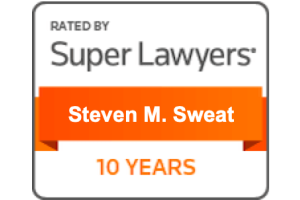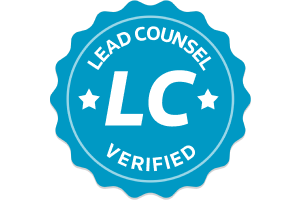- Free Consultation: 866-966-5240 Tap Here To Call Us
California Highway Fatality Verdict Remanded on Apportionment of Fault Issue

In some California personal injury accidents, multiple parties may share fault. When several parties are at fault for an accident, each party’s percentage of the fault must be determined. All parties that are found to share fault will then be responsible for paying the percentages allocated to them. An individual defendant will not have to pay more than the percentage of fault that he or she has. In Plascencia v. Deese, Cal. Ct. App. 2d Crim. No. B299142, the appeals court considered a case in which the court excluded evidence of the comparative fault of several defendants who had settled before trial so that the jury could not consider their comparative fault when it apportioned an award of damages in the plaintiffs’ favor.[1]
Factual and procedural background
Jocelyn Plascencia was a 20-year-old woman who was driving on SR-126 on April 19, 2014. A woman named Anita Newcomb was leaving a fruit stand that was located on the highway’s south side. She made an illegal U-turn to enter SR-126 in Plascencia’s path. Plascencia was driving a Toyota Camry. She swerved to avoid colliding with Newcomb’s vehicle, lost control of her car, and crashed into the rear of a tractor-trailer truck that had been parked on the south side of the highway close to the fruit stand by a man named Charles Deese.
Deese reportedly smelled engine oil and parked the truck to check its engine. After peering under the hood, he did not see any oil leaks. He decided to leave it parked unattended while walking to the fruit stand to purchase strawberries. While he was absent, Plascencia swerved to miss Newcomb, skidding across the highway and crashing into the rear of the parked truck. She was airlifted with serious injuries and died a month later.
Jocelyn’s parents filed a lawsuit against Deese, Ventura County, Francisco’s Fruit Stand, and Newcomb, alleging negligence, negligence per se, and keeping the public and private property in a dangerous condition. Before trial, the state settled for $1.5 million, and Newcomb settled for $115,000. Francisco’s Fruit Stand settled for $825,000. The case against Deese proceeded to a jury trial.
Before trial, several in limine motions were filed. The court denied Deese’s motion to present evidence of the state’s or fruit stand’s comparative negligence because Deese had argued that Newcomb’s illegal u-turn was the sole cause of Plascencia’s accident in his interrogatories. However, Deese had listed the third parties’ comparative negligence in his third and fourth affirmative defenses. At trial, the jury was told to only consider Deese’s and Newcomb’s comparative fault.
The jury returned a verdict in the Plascencias’ favor that included $30 million in non-economic wrongful death damages. The jury found that Newcomb was 60% at fault, and Deese was 40% at fault. Deese filed a motion for a new trial and a motion for judgment notwithstanding the verdict. The court denied both motions and stated that the award was appropriate because the court thought that the defendants had “sandbagged” the plaintiffs by failing to name the State of California and the fruit stand in its interrogatories and that the defendants could not attempt to surprise the plaintiffs at trial. Deese filed an appeal.
Issue: Whether the court committed an error as a matter of law by failing to grant the in limine motion to instruct the jury about the comparative negligence of all third parties?
The main issue on appeal was whether the trial court committed an error as a matter of law by denying the defendants’ in limine motion for the jury to be instructed about the comparative fault of all of the third parties, including the fruit stand, the State of California, and the owner of the parking lot in addition to Newcomb and Deese. The defendants argued that failing to grant the motion in limine was prejudicial because defendants are only supposed to be responsible for their proportionate share of the total fault, including the comparative negligence of other third parties.
Rule: Juries are required to apportion the fault between each tortfeasor, including those who settle before trial.
Under Cal. Civ. Code § 1431, when multiple parties contribute fault in an accident, the jury must divide the fault between all of the parties.[2] This requirement also includes apportioning the fault of tortfeasors who reach settlements before trial. The jury is supposed to compare the responsibility of each party as it relates to the others to arrive at an allocation of fault that is equitable.
Analysis
When multiple parties share fault in an accident’s cause, California follows a legal principle called comparative fault.[3] Under this principle, the percentage of fault caused by each party’s negligence is apportioned or allocated by the jury. Each party who is found to be at fault will be responsible for paying his or her percentage of allocated fault.[4] For example, if one defendant is allocated 20% of the fault while another is allocated 35% of the fault, each of those defendants will only be responsible for paying the percentage allocated to them. If a plaintiff is also determined to be partially at fault, his or her award will be reduced by the percentage attributed to him or her.
The court began by reviewing the rules concerning comparative fault and what the jury is supposed to consider. To fairly apportion fault between all of the tortfeasors, the jury is supposed to consider the percentage attributable to each one. This includes any defendants who have reached settlements with the plaintiffs prior to trial. The court then looked at the evidence in the case. It noted that the jury had awarded $30 million in damages but was not allowed by the court to consider the comparative fault of the State of California, the fruit stand, or the parking lot’s owner where the fruit stand was located. Instead, the jury was limited to considering only the comparative fault of Deese and Newcomb. The jury then returned a verdict, holding Newcomb 60% at fault and Deese 40% at fault. However, all of the other defendants besides Deese had settled before trial without having their percentages of fault allocated by the jury.
The court said that the trial court erred when it failed to allow the jury to consider the comparative fault of other third parties who had settled before trial. The court also found that the trial court erred by excluding any evidence of the other defendants’ culpability from the trial since the jury was unable to consider it when apportioning fault. Since the jury’s $30 million verdict was apportioned by the jury to reflect Newcomb’s responsibility but not the fault of the other parties to reduce Deese’s share, the court found that the trial court committed prejudicial error.
The court also considered the Plascencias’ argument that Deese could not assert the comparative fault of the defendants who had settled before trial because of his failure to name them as partially at fault in his interrogatories. However, the court stated that parties have no affirmative obligation to amend or supplement their answers to interrogatories. Even in situations in which new information should be disclosed, that is not enough to warrant the court’s exclusion of the evidence unless the defendants willfully violated a disclosure order.
However, the Plascencias never filed a motion to compel additional discovery following the interrogatories. They were also aware of the fact that the other defendants had settled and shared some comparative fault for the accident and their daughter’s wrongful death. Deese had also listed the settling defendants’ comparative fault in his third and fourth affirmative defenses, so it was not a surprise on the eve of trial to the plaintiffs. The court found that the plaintiffs knew that the comparative fault of all of the defendants was an issue under dispute but still failed to request additional discovery or complete further interrogatories on the issue.
Finally, the court considered several ad hominem arguments the plaintiffs’ attorney made at trial. The court found that they were also prejudicial to Deese.
Conclusion
The court reversed the judgment of the trial court and vacated the $30 million award of damages. The case was sent back to the trial court to conduct a new trial on the issue of damages and how they should be apportioned between all of the defendants. Deese was awarded his costs on the appeal.
Talk to an attorney at the Steven M. Sweat Personal Injury Lawyers
Injury accidents involving multiple potentially liable parties can be complex. An experienced personal injury attorney can carefully analyze the facts to make a liability determination for each involved defendant. This can help to secure the appropriate amount of compensation to compensate you for your losses. Call the Steven M. Sweat Personal Injury Lawyers to request a free claim evaluation so that you can about your rights by calling 866.966.5240.
Sources
[1] https://law.justia.com/cases/california/court-of-appeal/2021/b299142.html?utm_source=summary-newsletters&utm_medium=email&utm_campaign=2021-01-22-personal-injury-a0f4c6a02a&utm_content=text-case-read-more-6
[2] https://leginfo.legislature.ca.gov/faces/codes_displaySection.xhtml?sectionNum=1431.&lawCode=CIV
[3] https://www.victimslawyer.com/blog/what-is-comparative-fault-in-negligence-claims/
[4] https://www.victimslawyer.com/isnt-the-person-who-hit-me-legally-responsible-to-pay.html












